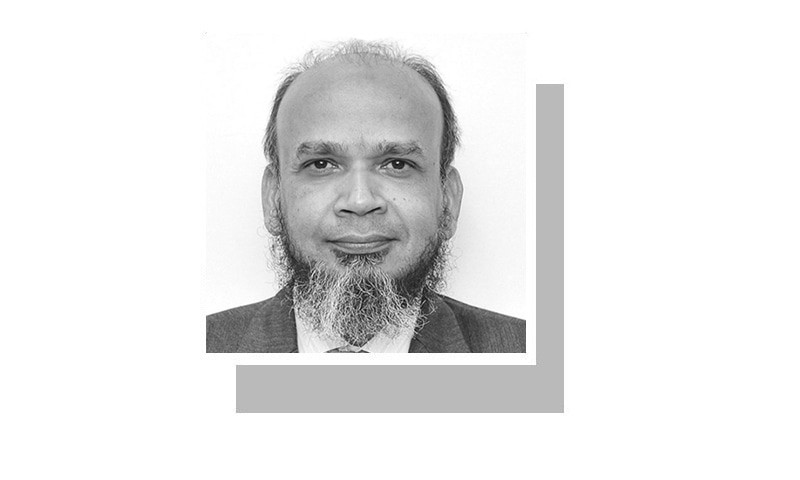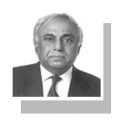By Riaz Riazuddin
Published in DAWN on December 17, 2021
OUR average monthly wage has risen from Rs6,612 in 2007-08 to Rs21,326 in 2018-19, according to the Labour Force Survey 2018-19 (LFS). In between these 11 years, the average wage increase was 11.2 per cent per annum, somewhat higher than the average yearly inflation rate of 8.9pc. While the wages have slightly outpaced the inflation indicating that real wages have risen, there is no denying the fact that these are very low. An alarming aspect is that the wages did not exceed Rs5,000 for about 5.7pc of all employees.
Our population in 2018-19 was 214.5 million, with a labour force size of 68.8m of which 4.8m were unemployed and 64m employed. Of all those employed, 27m were paid employees (wage earners) and 37m were non-employees (employers, self-employed or contributing family workers.) About 13.5pc (3.6m) of paid employees earned Rs5,000-Rs10,000; 26pc (7m) earned between Rs10,000 to 15,000; and the remaining 54.8pc (14.8m) earned over Rs15,000 per month. Remember that our minimum wage was set at Rs15,000 per month in 2018. This means that about 45.2pc (12.2m) of all wage earners earned less than the minimum wage.
Not only are the wages low, there also seems to be gender discrimination, with men earning Rs22,172 per month, slightly higher than the national average, and women earning Rs15,461, significantly lower than the national average. The plight of labour has been succinctly captured by Allama Iqbal in his various verses — one translation goes: “Your sharp paymasters have swept the board, they cheat and know no shame/ You, forever unsuspecting, have forever lost the game.”
One wonders why LFS lumped together its highest wage category of Rs15,000 and above in just one group representing more than half of all wage earners. It would have been much more informative if this was further subdivided into a few more wage groups. Wage distribution in terms of quintiles or deciles would have been even better. LFS, however, still provides a lot of useful data for informed readers or researchers. Wage distribution in terms of 21 industry subdivisions and nine occupational groups are present with provincial, urban-rural and gender bifurcation.
Not only are wages low, there also seems to be gender discrimination.
The highest national average monthly wage (Rs49,072) is for the finance and insurance sector, followed by Rs46,807 for the activities of extraterritorial organisations (resident offices of foreign missions and multilateral institutions) followed by electricity, gas and air-conditioning (Rs38,564). The fourth highest wage (Rs38,364) is for information and communication activities, followed by public administration and defence (Rs36,972). Household service activities (maids, cooks, gardeners etc) earn the lowest wage (Rs10,967) followed by agriculture, forestry and fishing (Rs11,228). The first sentence in this paragraph indicates that our financial sector is seemingly more generous in giving wages than multilaterals from whom our government borrows continuously.
Most of the paid employees (23.2pc) are involved in manufacturing activities with an average wage of Rs19,689. Construction activities employ 18.6pc with a wage of Rs17,463. Agriculture, forestry and fishing come third in employing 9.5pc of all wage earners. Educational activities employ 9.3pc (the fourth highest) with a wage of Rs30,238 (the eighth highest). Wholesale and retail trade and repair of vehicles employ 9pc with a wage of Rs15,234. Public administration and defence employ 6.5pc, and transport and storage 6.4pc with a wage of Rs20,366. Health and social work employ 3.1pc with a wage of Rs35,940. Interested readers should consult the survey for wages in all 21 industrial activities in all provinces.
Coming back to wage discrimination between the sexes in terms of occupational groups, the data is grim. Men’s average wages are higher in all nine occupational groups, from about 24pc to 420pc, compared to women’s wages. The highest difference is in the occupational group of ‘skilled agricultural, forestry and fishery workers’, with women receiving only Rs3,360 per month compared to Rs17,456 for men. The lowest difference is 23.8pc in the occupational category of ‘managers’, with women getting Rs52,953 compared to Rs65,592 for men. Even in the category of ‘elementary occupations’ ie unskilled jobs, the wage difference is 86.1pc, with Rs15,257 for men’s wages compared to Rs8,199 for women. While these summary results require more careful probing, Iqbal’s cry seems to depict the plight of women’s labour much more than men’s as in this translation of one of his verses: “Omnipotent, righteous, Thou; but bitter the hours/ Bitter the labourers chained hours in Thy world!”
The fact that the lowest wage is earned in household service activities makes wage discrimination in this sector much worse because a larger proportion of women (11.4pc) are involved in this service compared to men (1.2pc). A similar situation exists in education and health activities. One may be surprised to note that in six out of 21 industry divisions, the average wages of women are significantly higher than those of men. For example, in transport and storage activities, women’s wage is Rs49,847 compared to men’s at Rs20,253. This, however, does not necessarily indicate reverse discrimination as the proportion of women employees in this sector is only 0.2pc compared to 7.3pc for men. A larger number of men with very high wages for a few males compared to a much larger number of men with low wages may have driven the male average below that of the female average. This and several other points are for researchers to explore. Graduate students of economics can easily pursue their PhD on this or related topics.
Labour economics is a very important but largely neglected area of research in our country. As is well known, David Card, a labour economist, won the economics Nobel Prize in 2021. Among his other works is a pioneering research in empirically establishing that increasing the minimum wage does not reduce labour growth — exactly the opposite of theoretical orthodoxy. His work needs to be replicated in our country setting. Perhaps some young economists will take up this challenge in future and set our labour and wage policies in the right direction.




